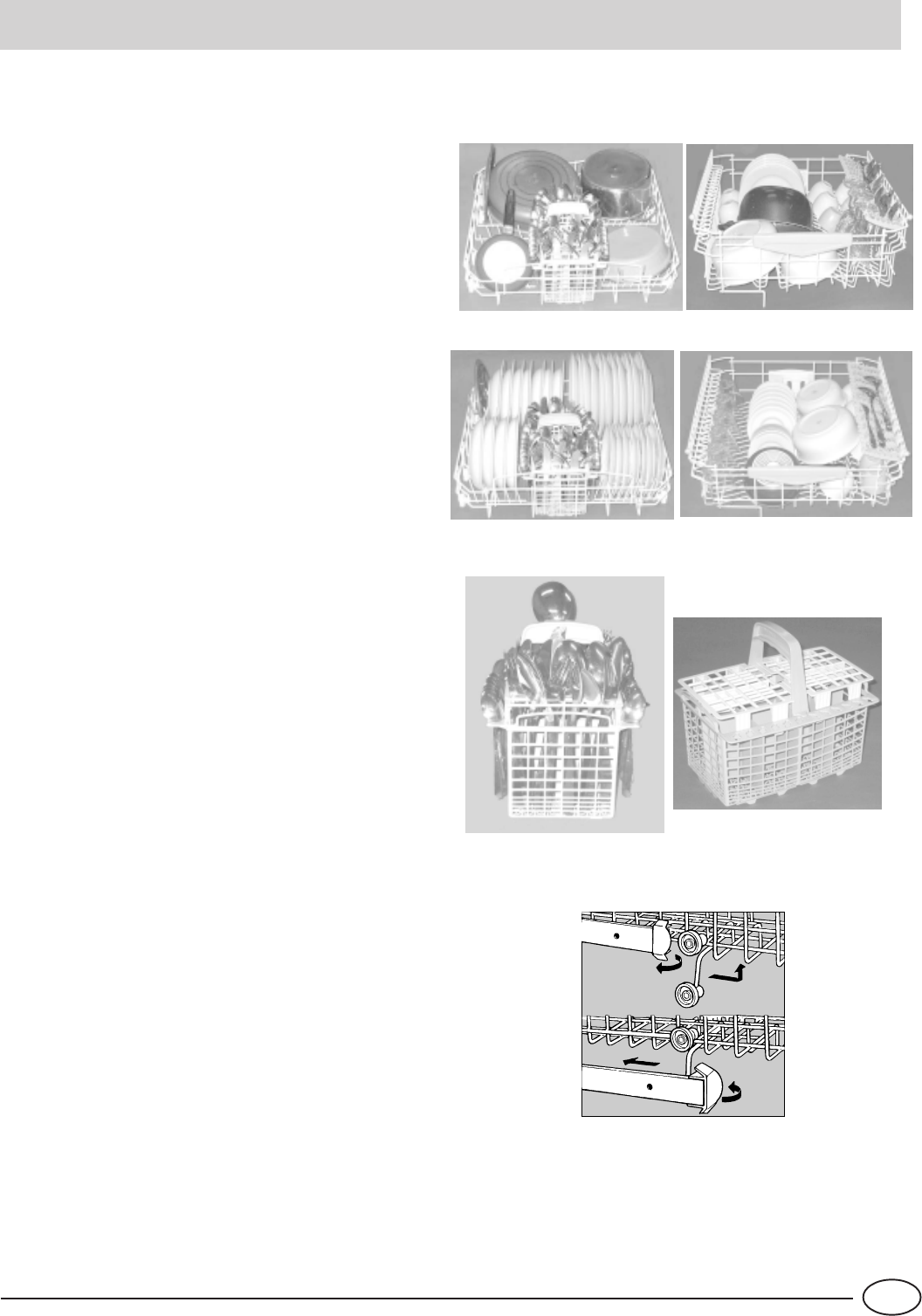
5
GB
Loading the Dishwasher
Before placing the dishes in the dishwasher, remove the
larger food particles to prevent the filter from becoming
clogged, which results in reduced performance.
If the pots and pans have baked-on food that is extremely
hard to remove, we recommend that they be allowed to
soak before they are washed. This will eliminate the need
for extra wash cycles.
Pull out the racks to facilitate loading the dishwasher.
How to Use the Lower Rack
We recommend you place the most difficult dishes to wash
into the lower rack: saucepans, lids, soup dishes and plates,
but also: mugs, cups and glasses (see photos for load
examples).
•Serving dishes and large lids: place them on the sides of
the rack.
•Saucepans, salad bowls: must always be placed upside
down
•Very deep dishes: place them obliquely, thus allowing
water to run down them and cleaning them better
•Glasses and cups: Position them as indicated in the figu-
re.
- Silverware should be placed in the silverware basket
with the handles at the bottom; If the rack has side
baskets, the spoons should be loaded individually into
the appropriate slots (see figures)
- Especially long utensils should be placed in the hori-
zontal position at the front of the upper rack.
How to Use the Upper Rack
The upper rack is designed to hold more delicate and
lighter dishware, such as glasses, coffee and tea cups
and saucers, as well as plates, small bowls and shallow
pans (as long as they are not too dirty).
- Position the dishes and cookware so that they do not
get moved by the spray of water.
How to adjust the Upper rack ...
The top rack can be adjusted using the two rack heights
(top and bottom). To adjust the rack, open up the tabs
that lock the guides and pull out the rack. Arrange the
rack with the back wheels in either the top or bottom
position and then insert it along the guides until the front
wheels are on as well. Close the tabs to lock the rack in
place (see Fig. F).
Bottom Rack
Top Rack
Load examples
1
2
3
4
Fig. F


















